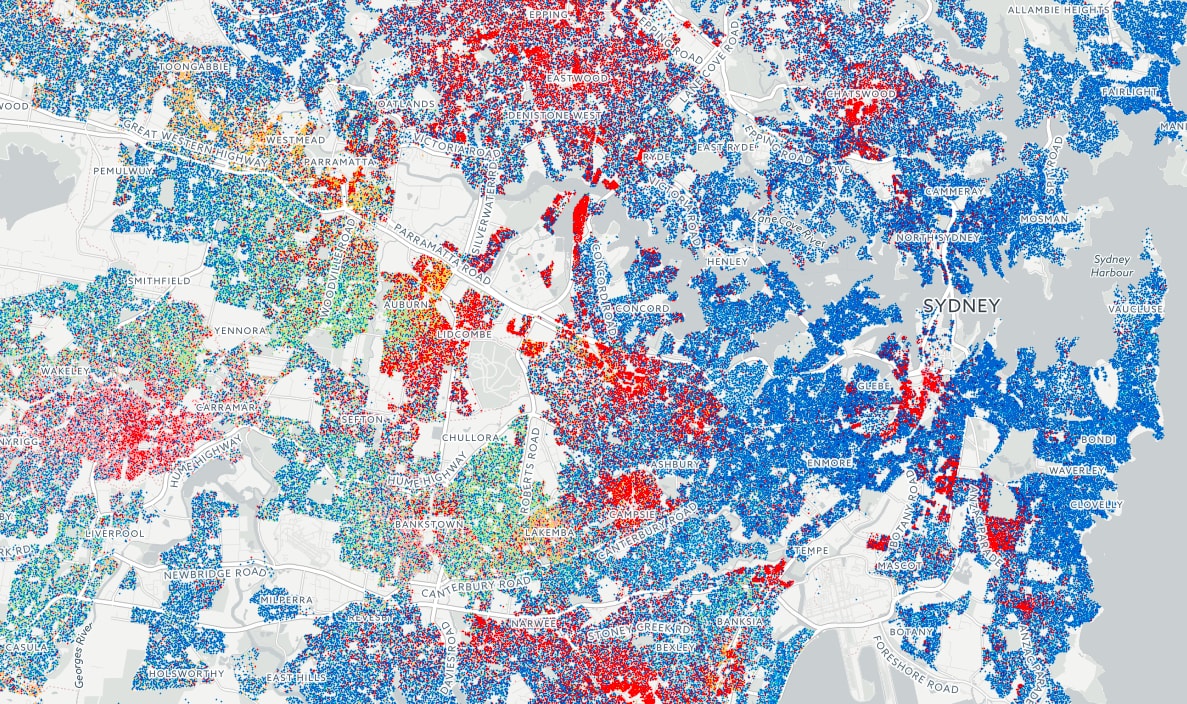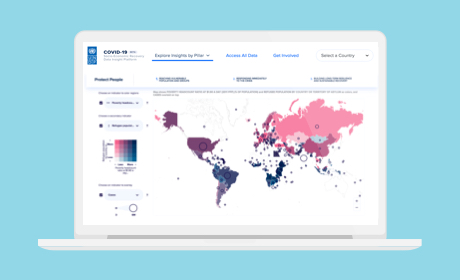These maps visualise the Language Spoken at Home (LANP) data from the 2016 Census. Data was available at the most granular geographic division possible (mesh blocks). This enabled us to produce a dot density map that vividly shows how people from different cultures coexist (or not) in ultra high resolution. Each coloured dot represents 5 people from the same language group in the area. Highly populated areas have a higher density of dots; while language diversity is shown through the number of different colours in the given area.
Do you live in an area that’s heavily intermixed or segregated? Do you think language diversity is a benefit of multiculturalism in Australia? Ping us on Twitter @smallmultiples
The maps have been featured in The Age article Blue and red, with green flashes - map reveals Melbourne’s kaleidoscope of languages with detailed analysis by Craig Butt
Sydney
View full-size map of Sydney 1 dot = 5 people
Melbourne
View full-size map of Melbourne
1 dot = 5 people
Language groups
- • Eastern Asian: Chinese, Japanese, Korean, Other Eastern Asian Languages
- • Southeast Asian: Burmese and Related Languages, Hmong-Mien, Mon-Khmer, Tai, Southeast Asian Austronesian Languages, Other Southeast Asian Languages
- • Southern Asian: Dravidian, Indo-Aryan, Other Southern Asian Languages
- • Southwest And Central Asian: Iranic, Middle Eastern Semitic Languages, Turkic, Other Southwest and Central Asian Languages
- • Northern European: Celtic, English, German and Related Languages, Dutch and Related Languages, Scandinavian, Finnish and Related Languages
- • Southern European: French, Greek, Iberian Romance, Italian, Maltese, Other Southern European Languages
- • Eastern European: Baltic, Hungarian, East Slavic, South Slavic, West Slavic, Other Eastern European Languages
- • Australian Indigenous: Arnhem Land and Daly River Region Languages, Yolngu Matha, Cape York Peninsula Languages, Torres Strait Island Languages, Northern Desert Fringe Area Languages, Arandic, Western Desert Languages, Kimberley Area Languages, Other Australian Indigenous Languages
 View All
View All






